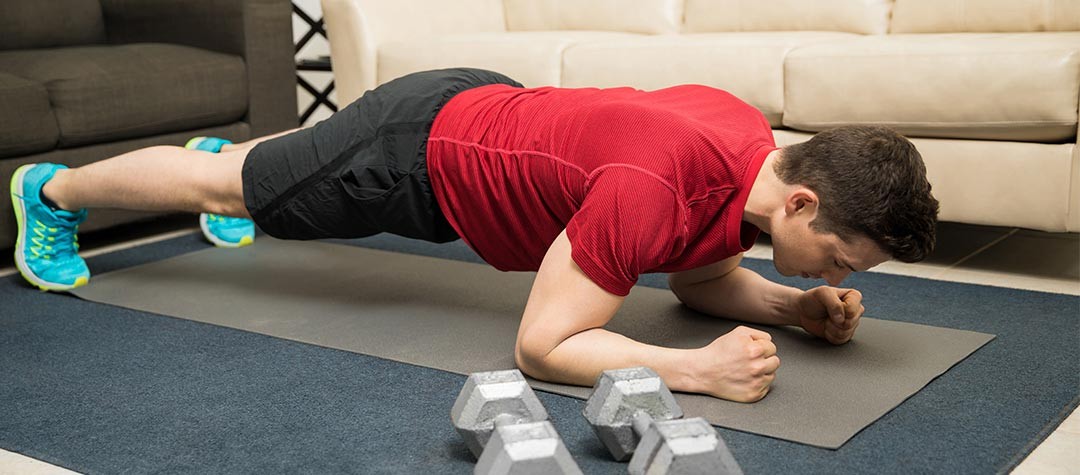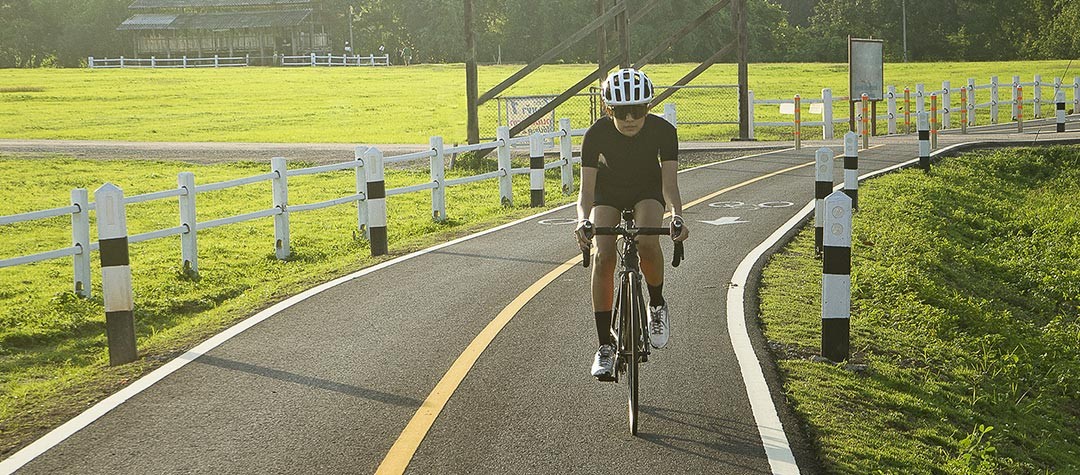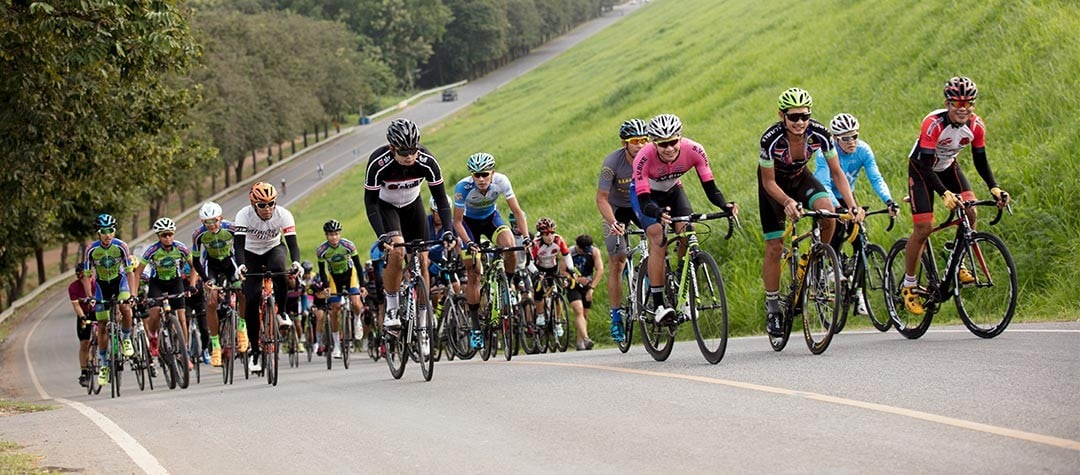You can have huge leg strength, but without a stable core you won’t be able to ride efficiently. Improve your core strength and you’ll ultimately improve your riding.
Core training should be a part of every cyclist’s training, but many neglect it, somewhat understandably perhaps, in favour of more time on the bike. But core training shouldn’t be disregarded as it’s the abs and lower back that are the the vital component from which all movement stems.
While cycling relies on core strength, riding doesn’t as a matter of course significantly build your core strength. You will get that bit stronger from cycling, but it’s definitely worth doing some supplementary core work - your back will thank you for it!
The core keeps the body stable on the saddle and improves efficiency by preventing excessive side-to-side movement so that all the energy produced is delivered in a smooth pedal stroke. That rocking or swaying motion resulting from lack of core strength leads to a lack in efficiency (and potentially some saddle sores) and the body starts to use other muscles to compensate. This can lead to pain in a number of areas including the hips, groin, hamstrings, quads, as well as the lower back, shoulders and neck.
Muscles to focus on so that your entire cores works as a unit, include:
- Transverse abdominus
- Lower back
- Obliques
- Glutes
- Hamstrings
- Hip flexors
Here are a few key exercises, varying in difficulty, you could try and introduce to improve your overall core strength:
1. The plank
The plank is a very simple exercise for core strength and is utilised not only by cyclists but other sports where core strength is essential.
Method :
- Lying on your stomach, place elbows directly under shoulders and keep forearms parallel.
- Bring in your core muscles by sucking in your stomach and hold steady.
- Lift up on to your toes creating a straight line through shoulder, hip, knee and ankle joints. Don’t let the lower back arch and keep the neck in a neutral position. Hold this position for approximately 30 seconds for three sets.
- As you progress, increase the duration of the hold position by 10 seconds each session or start to add some instability, for example, by placing your feet on a Bosu ball.
Muscles worked: Transverse abdominus, upper and lower back.
2. Side plank
Side planks are similar to the standard plank , except as you might expect, they are performed on your side.
Method:
- Lying on your side with knees straight.
- Support your upper body with one forearm resting on the ground and your legs extended out, with your feet stacked on top of one another.
- Contract your abs as if you were about to be hit in the stomach.
- Raise your hips and aim for a straight line from shoulder to foot and keep a straight back.
- Perform the side plank on the right and left sides of the body, holding the position for at least 20 seconds on each side.
Muscles worked : Internal and external obliques and transverse abdominis.
3. Back extensions
Back extensions will help with the troublesome pain experienced by many riders after long ride and should ensure greater comfort during rides themselves.
Method:
- Lie face down, legs hip-distance apart and extended straight, arms at sides and head and neck in a neutral position.
- Lift the chest and upper abdomen off of the ground, moving towards the hips.
- Pause in the ‘up’ position and slowly lower to the start position. Perform 10-15 reps in a slow and controlled manner.
- There should be no movement from your hips to your toes.
- If you feel discomfort in the lower back, try widening the distance between the legs or decrease how high you lift.
Muscles worked : Lower back.
4. Floor bridge
The floor bridge is a great exercise for activating the glutes and the stabilising muscles of the lower back.
Method:
- Lay on your back with knees bent and feet shoulder-width apart and flat on the floor.
- Lift the pelvis and squeeze glutes until the knees, hips and shoulders are all in line.
- Hold the position for a few seconds and then slowly lower pelvis down around until just a few centimetres off the floor.
- Repeat the movement up to 12 times per set.
- As you progress you can move to doing this exercises as a single leg exercise.
Muscles worked : rectus abdominis, transverse abdominis, lower back, glutes, hamstrings.
5. Boat Pose
This yoga pose builds the lower-back stability and core strength needed for those long hours on the saddle.
Method :
- Sit with your knees bent and together, feet slightly lifted off the floor.
- Reach your arms forward and shift your weight into your sit bones, and draw your abs in tight, and lift your chest.
- Try straightening the legs as much as you can to form a ‘V’ shape with your body and hold the pose. At first stay in the pose for 10-20 seconds, but gradually increase this to 1 minute.
- If you find the pose too difficult at first, try bending the knees slightly to make it that bit easier.
Muscles worked: Transverse abdominus, hip flexors, lower back.
6. Boxer Ball Crunch
Boxer ball workout involves laying on a stability ball and clenching your abs while making an oval motion. As it involves a great deal of motion, in both a clockwise and counterclockwise direction, it incorporates more core muscles than a standard crunch.
Method:
- Lie with the middle of your back on a stability ball, knees bent 90 degrees and feet flat on the floor.
- Place your hands behind your head but don’t pull the head forward as this will put unnecessary strain on the neck.
- Contract your abs and instead of crunching straight up, rotate the body in an oval pattern, being sure to keep applying pressure on the lower back to keep the ball still. After completing 12 clockwise motions, do 12 counterclockwise.
- You can increase the number of motions and reps as you progress.
Muscles worked: Transverse abdominus, obliques, lower back.














